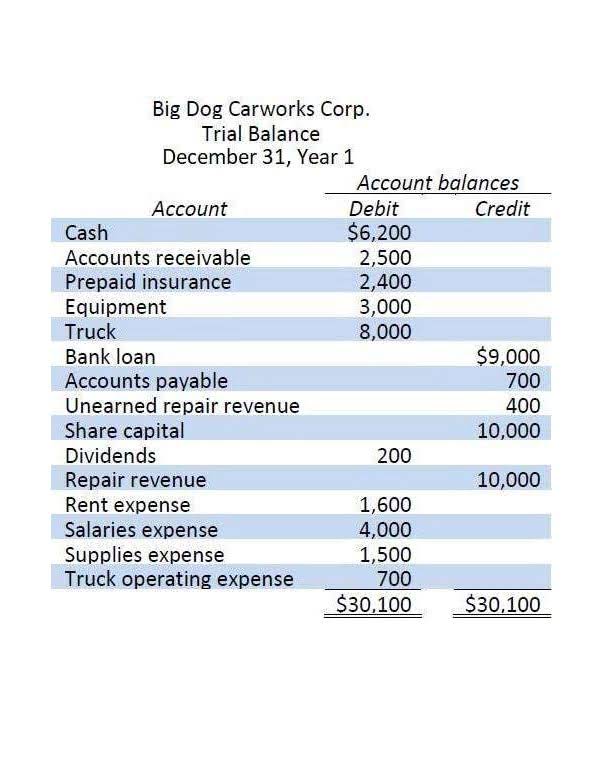The 8 Steps in the Accounting Cycle

This level of control is crucial for businesses that want to stay on top of their finances and make informed decisions based on accurate data. To record your transactions in T-Accounts, you may think it’s complicated at first, but once you understand the concept of debits and credits, it becomes a straightforward process. Journal entries are a building block for financial accounting. They provide a detailed and chronological record of every business transaction. recording transactions in a journal They ensure transparency, accuracy, and compliance while preparing the general ledger.
Journal Entry: Examples, Types, Common Mistakes, and FAQs

Every journal entry must have at least one debit and one credit, in which the total debit amount must equal the total credit amount. Single-entry bookkeeping is an accounting system where transactions are recorded through one entry only. Bookkeeping handles the day-to-day recording of financial transactions, such as sales, purchases, receipts, payments. At the same time, Deskera lets you integrate directly with your business bank account.
- Obviously, business transactions occur and numerous journal entries are recording during one period.
- They help in future verification and can be used as proof in a court of law when needed.
- If cash is being received at the time of the sale, the textbook will specify “received cash” to indicate that.
- It is important to understand the impact of debits and credits when recording journal entries.
- Journal entries are records of financial transactions flowing in and out of your business.
- This ensures that your financial statements provide an accurate picture of your business’s performance over time.
- Adjusting entries eliminate these risks by correcting any mistakes and providing a more accurate representation of your business’s financial health.
How AI Supports Smarter Financial Recordkeeping
For example, if the Cash account is on page 101 of your ledger, you’d note “101” in the PR column next to any cash entries. Dive into the world of accounting with our guide to understanding the general journal. Learn how this financial diary records transactions and forms the bedrock of your business’s financial story. Businesses must balance every financial transaction, ensuring the sum of the credits is always the same as the sum of the debits. In other words, they must ensure that they debit the corresponding account every time gym bookkeeping they credit one. Common misconceptions may arise when people mistakenly believe that debits always represent negative amounts or that credits are always positive.

Automatic Journal Entries
In the journal entry, the $30,800 record of what is due to the company goes on the left (debit) side of the account because Accounts Receivable is increasing. In the journal entry, the $8,300 payment of cash goes on the right (credit) side of the account because Cash is decreasing. In the journal entry, the $3,300 purchase of supplies goes on the left (debit) side of the account because Supplies is increasing. Journal entries are used to record business transactions and events. The journal entry shows that the company received computer equipment worth $1,200. When a payment is made to the supplier, the accountant will enter the invoice number in the software which will result in a credit or cash account in the transaction records of the firm.
What is a Journal Entry in Accounting?
But before transactions are posted to the T-accounts, they are first recorded using special forms known as journals. Journalizing is the process of recording a business transaction in the accounting records (Journal Book). The process to prepare a journal entry or in other words make a journal entry from scratch is divided into 4 different steps. Adjusting entries are used to update previously recorded journal entries. They ensure that those recordings line up cash flow to the correct accounting periods.
Accrual Accounting vs. Cash Accounting
- Accountants use special forms called journals to keep track of their business transactions.
- Traditional journal entry format dictates that debited accounts are listed before credited accounts.
- In the Fees Earned account, the $30,800 revenue goes on the right (credit) side of the account because the revenue is increasing.
- Understanding double-entry bookkeeping will help us learn about debits and credits and the role of journal entries in recording business transactions in the accounting books.
- Our job now is to determine what the balance SHOULD BE in our asset account.
Therefore, it might only have a few accounts payable and inventory journal entries each month. Larger grocery chains might have multiple deliveries a week, and multiple entries for purchases from a variety of vendors on their accounts payable weekly. As you might’ve guessed, a journal entry for sales of goods, is created whenever your business sells some manufactured goods. Since these are self-descriptive enough, let’s move on to some more complex accounting journal entries.


However, large enterprises will need advanced accounting software and a dedicated finance and accounting team to ensure financial transactions are being recorded correctly. In this example, the office supplies account is debited to reflect the increase in supplies, while the accounts payable account is credited to record the liability incurred. The purpose of a journal entry is to accurately record all the details regarding a transaction. A record of transactions in accounting is created when you journalize transactions. He has a ledger book where he writes down all of his daily transactions. Every day, he records all of the transactions, regardless of whether they are big or small.
- The business now owes that investment back to the business owner.
- Common Stock had a credit of $20,000 in the journal entry, and that information is transferred to the general ledger account in the credit column.
- The following comments note the most common methods available.
- Below is an illustrative example involving several common business transactions and how to record them in the general journal.

Final accounts gives an idea about the Profitabilitty and Financial position of a business to its management, owners, and other interested parties. Step 1 –Total the amount column of the debit side and the credit side separately and then ascertain the difference of both the columns. Transactions, when recorded in a Journal, are known as entries. Let’s look at a payment of $1,000 with $800 going towards the loan balance and $200 being interest expense.
That said, journalizing is the process of correctly recording transactions in the right accounting journals. In the first step, individuals must determine the type of business transaction that has taken place. One must note that purchases, payments, sales, and receipts fall under different categories. The journal book must record every business transaction, which means entries need to be made.
